This wooden pavilion set among lush gardens forms a retail space in Mexico City for fragrance brand Xinú, designed by its founders Esrawe + Cadena.
The Xinú Marsella space occupies a former car mechanic’s workshop in the city’s Juarez neighborhood that has been transformed into an oasis of greenery.
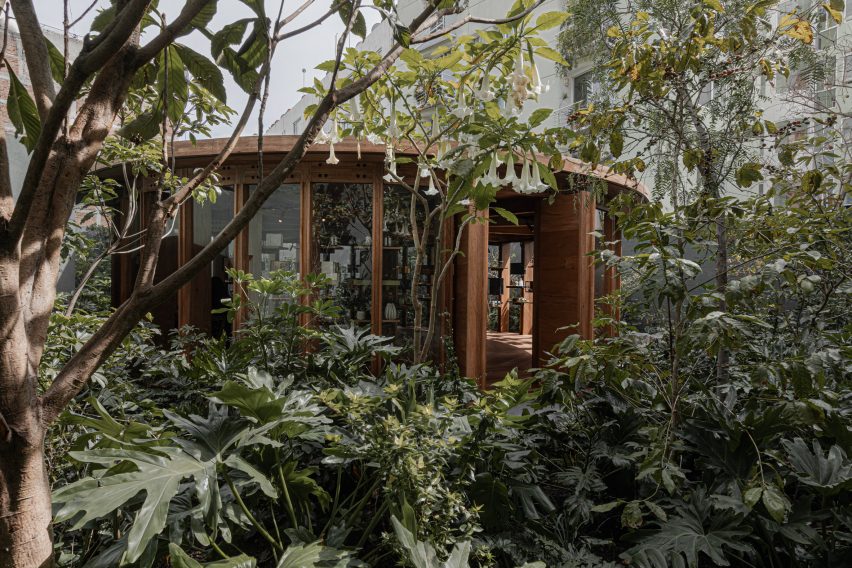

It was built to provide a multi-sensory experience for customers of perfume and home scent brand Xinú, which designers Héctor Esrawe and Ignacio Cadena founded in 2016.
Both had a hand in creating the retail space, which is intended to reinvigorate the leftover industrial space and provide an enjoyable spot to visit.
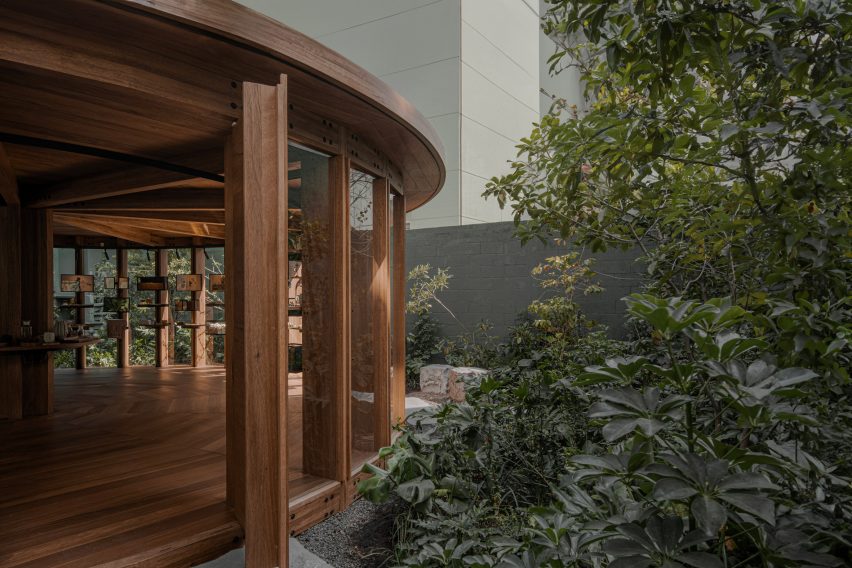

The design approach started with the idea of gifting a garden to the neighbourhood, ingeniously giving life to a vacant space by harmoniously blending a holistic experience that integrates the seductive power of nature, with design and architecture,” said the design team.
Visitors approach the space via an unassuming metal gateway on the street, passing through a tunnel with many potted plants on either side before emerging into the courtyard.
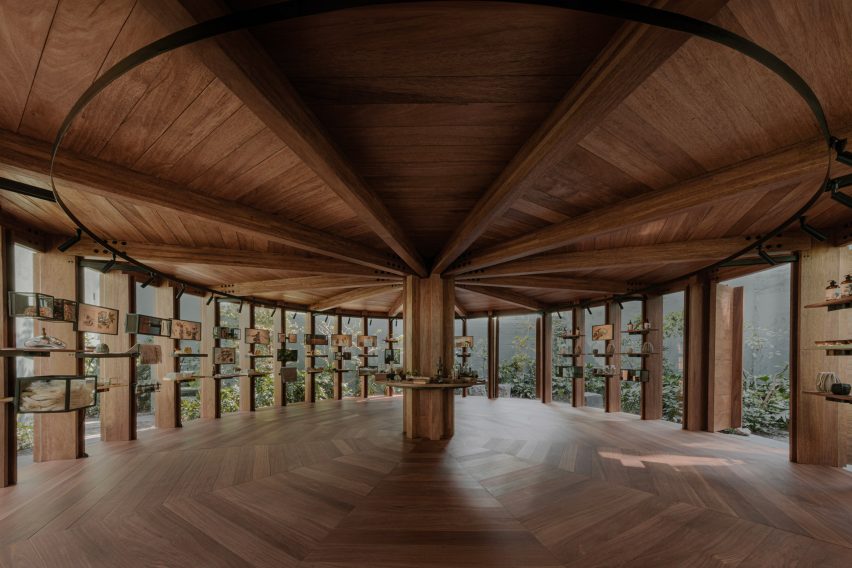

A flagstone path guides this journey to and around a circular single-storey pavilion built almost entirely from laminated tornillo wood.
Its radial construction revolves around a large central pillar, from which structural beams emanate to support tongue-and-groove ceiling panels.
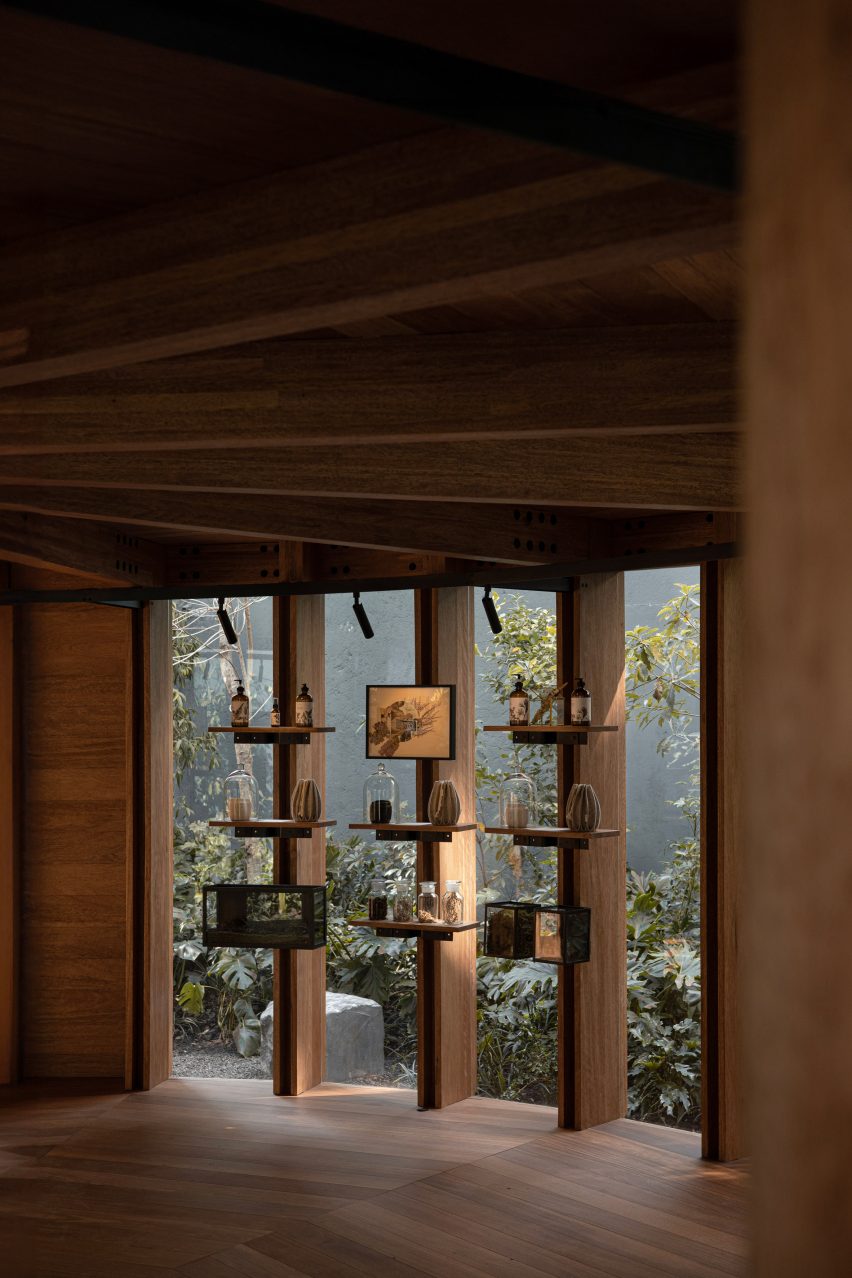

The pavilion sits on a steel frame atop a system of red grandis wood beams, while a pine lattice above the ceiling supports a plywood board roof.
Around the perimeter are a series of vertical louvres that provide anchors for shelves and vitrines displaying a variety of items.
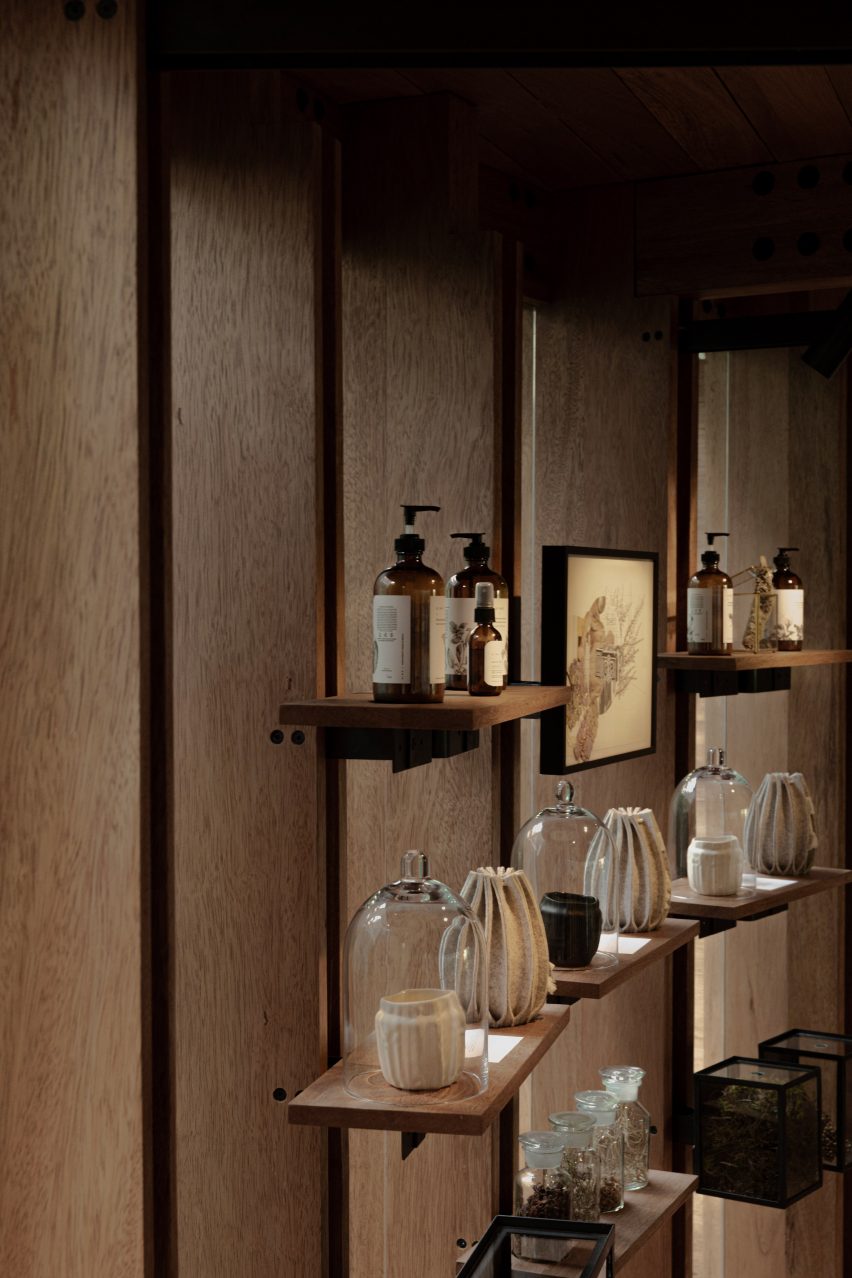

Glass panels fill most of the gaps between the louvres, except the two that are left for the wooden doors.
At night, a ring of track lighting illuminates the displays that range from Xinú perfumes and candles, to olfactory-stimulating natural items, small plants and botanical drawings.
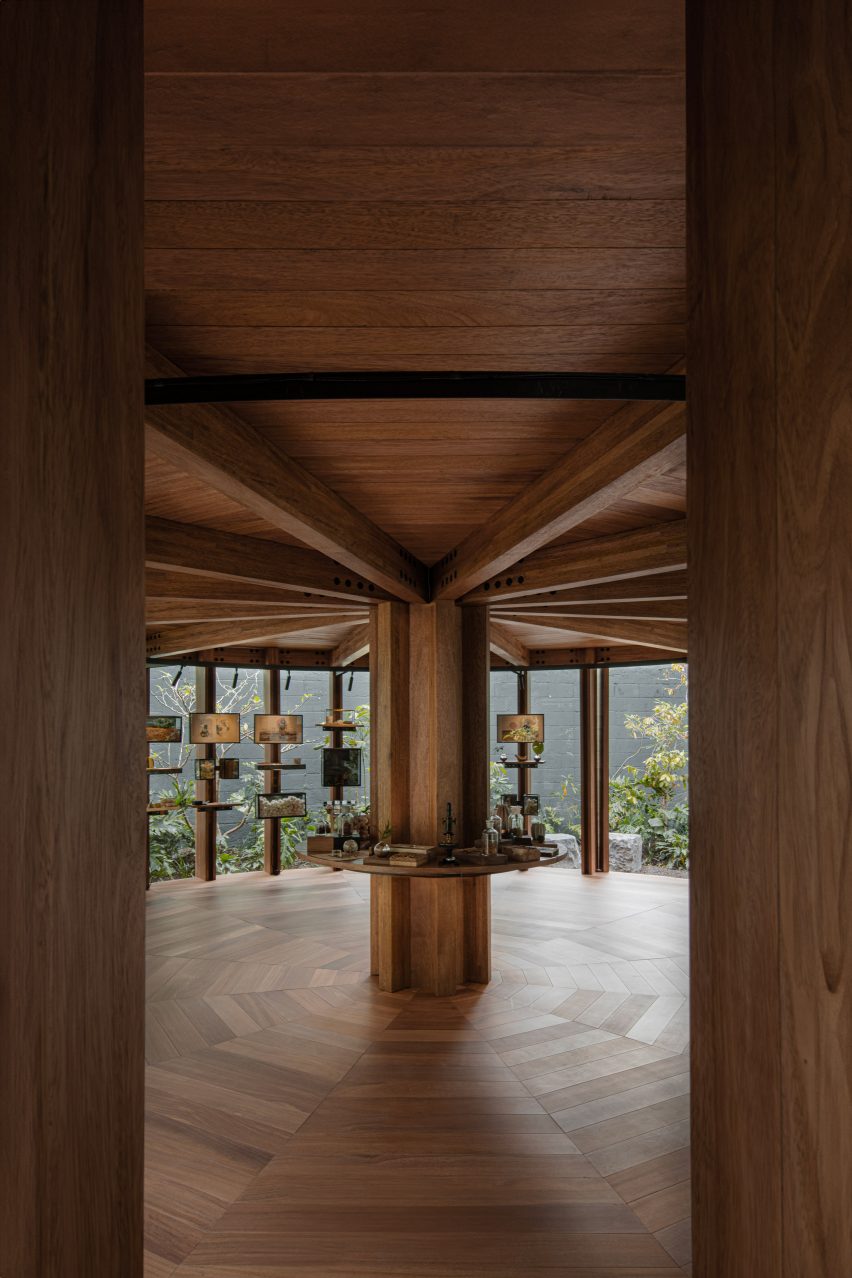

“This thoughtful arrangement allows the periphery to fully embrace the botanical realm, correlating scents, candles, incense and home products with the vivid tapestry of the landscape,” the team said.
“Supported by a powerful authentic brand narrative, the pavilion unfolds as a contemplative journey, a multi-sensory approach inviting guests to explore a universe crafted by simplicity and the fragrant symphony of nature as well as Xinú’s unique products and scents.”
Xinú launched during Design Week Mexico in 2016, when the brand’s stacked-hemisphere reusable bottles – also designed by Esrawe Studio and Cadena & Asociados – were unveiled.
Esrawe is one of Mexico’s most prolific contemporary designers, and in a recent interview with Dezeen, said that Mexican design and architecture is undergoing a “renaissance”.
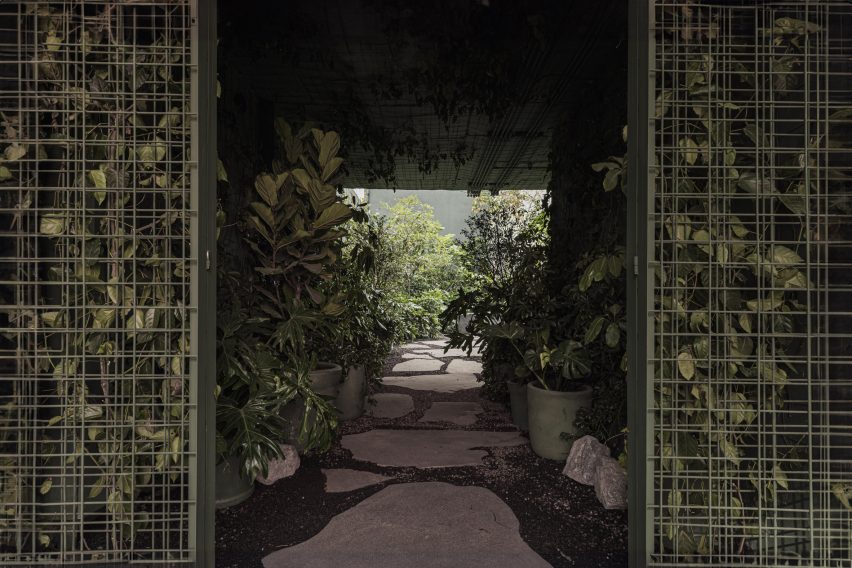

His studio’s recent projects include the Albor Hotel in San Miguel de Allende where planes of green tile are suspended from the lobby ceiling and an apartment in Mexico City anchored by a cruciform cabinet.
Cadena frequently collaborates on projects with Esrawe, offering art direction, concept design and brand identity.
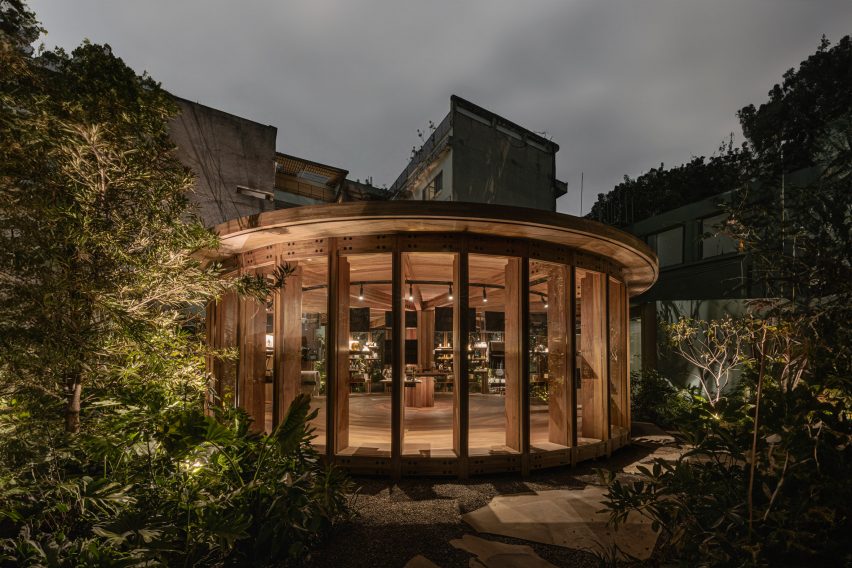

Other projects the two studios have completed together include Grupo Arca’s showroom and cultural centre in Guadalajara and the Tierra Garat cafe in Polanco, Mexico City.
The photography is by Alejandro Ramírez.
Project credits:
Concept and experience: Esrawe + Cadena
Architecture, interior design, furniture: Esrawe Studio
Display and artwork design: Cadena Concepts
Design team: Heisei Carmona, Nuria Martin, Laura Vela, Ángel Durán, Raúl Araiza, Rodrigo Romero, Pablo Ávila
Visualisations: Yair Ugarte
Scale models: Alejandro Uribe, David Díaz
Wood: Micmac
Structure: Sergio López
Installations: JLC Remodelaciones
Landscaping: Arturo Flores
Lighting: Lighteam

